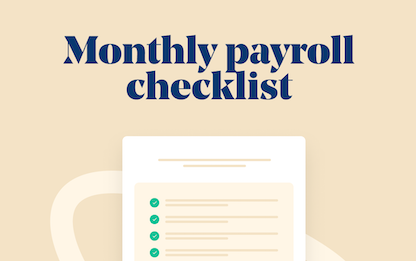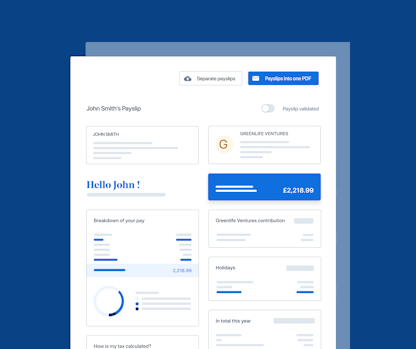- Blog
- |Managing Payroll
- >Compliance
- >guide to employee IDs
A Short Guide to Employee IDs for UK Employers


Having a secure and accurate way to keep employee records is no walk-in-the-park for UK businesses. However, the job gets less tedious when you assign employee IDs to your staff.
In this short guide, we’ll discuss what employee IDs are, why these IDs are beneficial, and so on.
Let’s begin.
What is an employee ID?
An employee ID is a unique form of identification that UK employers assign to individual employees.
An employee ID, like a passport or any other identifying material, is unique to each UK employee. So it’s expected that no two employees have the same employee ID.
A typical employee ID contains personal information (like name, address, and payroll details) about the individual and some other information about how these individuals relate to your business.
Employee code or employee number are other terms that mean the same as an employee ID.
Three reasons why your business should use employee IDs
UK law doesn’t mandate businesses to assign IDs to their employees. However, you’d be doing yourself a world of good if you choose to use employee IDs within your company.
Here are three reasons you should consider using employee IDs as an employer.
To organise and manage employee records
Generally, an environment becomes chaotic when there’s no order to things. The same can happen within your company if you fail to put suitable systems in place to keep things organised.
With an employee ID system, you’ll have an organised and well-maintained collection of information concerning your employees. This way, finding an employee’s personal details, payroll information, department, employment details, annual leave and absences, and so on would be a breeze.
You’d find using employee IDs especially beneficial if you have more employees than you can count on one hand.
For security reasons
All employees shouldn’t have the same level of access within your company building or around the online software or applications you use.
With an employee ID, you could grant only specific individuals access to sensitive information. So, for instance, a salesperson’s ID might not give them the clearance to view information that a senior sales executive’s ID would give them access to.
You can also assign temporary IDs to interns, contractors, or clients whenever they want and set how far it can get them within your applications or building.
To not put your employees at risk of identity theft, you should avoid placing sensitive information like birthdays and National Insurance (NI) numbers on an employee ID.
To resolve identity mix-ups
As your company grows, it won’t be long before you employ different people with the same names. Using their names as an identifier won’t be a wise choice and could cause some mix-ups and confusion.
On the other hand, a unique employee ID can help you quickly identify employees even if they have the same names. That way, you wouldn’t make an avoidable error like paying Marketing John Doe’s salary to Sales John Doe.
Even if employees change their names sometime in the future, the ID remains the same and ensures you don’t make any errors.
How should you format an employee ID?
There is no one-size-fits-all format for employee IDs. UK companies and employers can decide how to design their employee IDs.
Here are some of the most common employee ID formats:
Sequential digits based on when an employee was hired. For instance, 00009 would represent an early hire, while 00743 would be for a hire made much later.
A mix of digits and letters where the letter signifies the employee’s department. For instance, ACC1234 could be an ID for an employee in the accounting department.
Special codes for temporary workers like interns or contractors. For instance, TEMP007.
It’s essential to be consistent with the employee ID format you’ve chosen, as changing it often could confuse employees and defeat the purpose of the IDs.
Your company’s employee IDs should come from the same department if you want them to be consistent. For instance, you could assign your Human Resources department to assign these employee IDs to ensure there are no duplicates and everything is organised.
What’s the difference between an employee ID and a payroll number?
Although similar, an employee ID varies from a payroll number in one key area.
An employer typically assigns an employee ID to help identify details about a specific employee.
A payroll number, on the other hand, is more of an identifier for the position instead of the employee in that role.
For example, let’s assume Jane is a content writer for ABC. Jane’s employee ID would remain the same no matter the position she holds in the company — as that number is tied to her as an individual.
However, her payroll ID would change if she was promoted from a content writer to a content marketing manager. Her new payroll ID would reflect her current role.
Payroll IDs are primarily used for payroll and tax purposes and ensure employees are paid what they’re supposed to be paid.
HMRC also records the payroll IDs of employees working under employers who use the Pay As You Earn (PAYE) payroll system.
Stay safe and organised with PayFit
Employee IDs help you keep a tidy database of your employees and allow you to identify them without revealing personal information that might put them at risk.
Using payroll software like PayFit, UK businesses can automatically generate and distribute forms wherever they want employee IDs to appear.
Businesses can also use PayFit to build custom reports that use employee IDs as identifiers.

UK Expenses Management - A Guide For Employers

Overtime Pay Rates & Laws in the UK

The 2024 UK National Living Wage - An Employer’s Guide

The Cost Of Recruitment In The UK - What You Might Not Know

UK National Insurance Changes for January 2024


